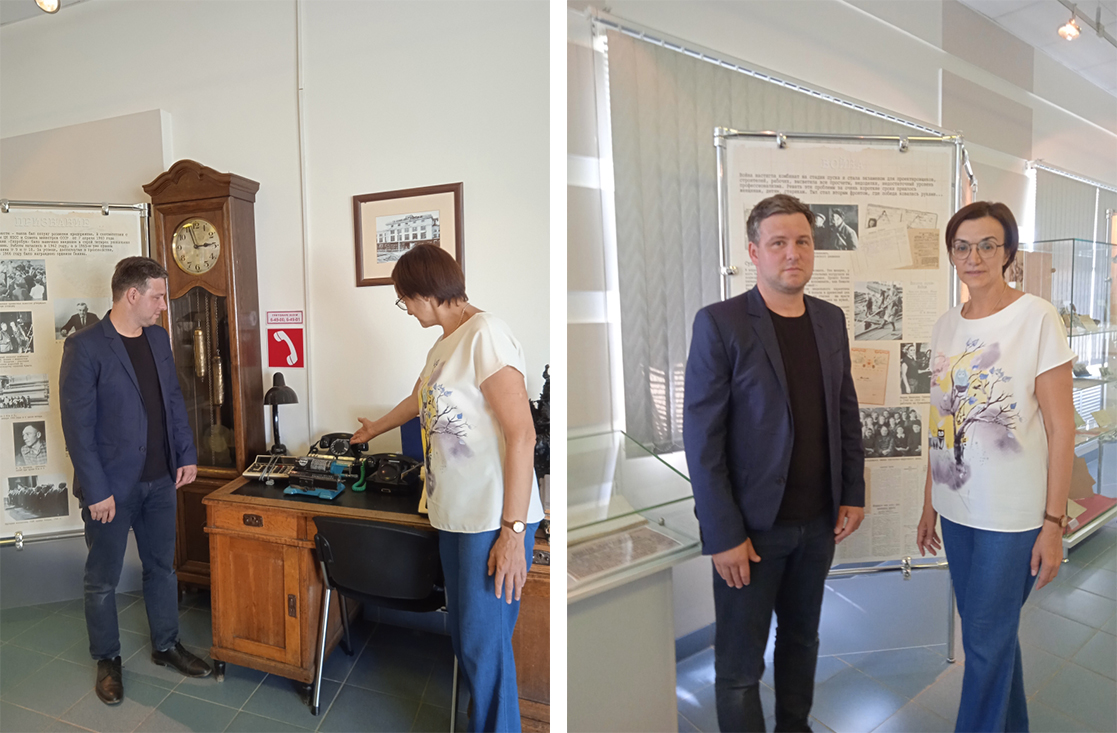On Friday, July 9, JSC "Solikamskbumprom" was paid a working visit by a researcher at the Technological Institute of NRNU MEPhI, Candidate of Historical Sciences Ivan Valerievich Zykin.
The working trip was organized with the aim of researching the history of the timber industry complex of the Ural region and in-depth study of the topic "Spatial distribution of the USSR industry during the pre-war five-year plans: concept and result." One of the areas of scientific work of I.V. Zykin is the study of civil and industrial buildings, as well as the history of the development of the Solikamsk Pulp and Paper Mill, the periods of its construction and the first years of operation. As part of the working visit, Ivan Valerievich visited the production site of JSC "Solikamskbumprom", inspected the buildings of the bleaching and drying workshop and the technical paper workshop, built in the 30s and 40s, as well as a repair and mechanical workshop, a thermal power plant, a timber exchange.
In addition, the researcher got acquainted with the archival documents stored in the museum of the history of the enterprise and with the filing of the corporate newspaper "Bumazhnik".
Ivan Valerievich Zykin, Associate Professor of the Department of Socio-Economic Disciplines of the Technological Institute (branch) of the National Research Nuclear University MEPhI, Candidate of Historical Sciences:
- The impressions of the trip are wonderful. Solikamsk is a city with a rich history: from these places began the development of Siberia, from here a road was laid to my native Verkhoturye. During the trip, I managed to walk around the working village, inspect residential buildings built in the 30s and 40s, and most importantly, I had the opportunity to get acquainted with the production site of JSC "Solikamskbumprom", to see live the buildings that were built on the eve of the Second World War, to receive understanding of the production process. In general, I want to note that the settlements on the territory of which the industrial giants were built have a richer and more varied appearance - there are both wooden buildings and stone houses, as well as houses of the constructivist style, which are of great historical and cultural significance. All this is gradually being lost, destroyed. Therefore, it is very important to form a scientific understanding of how cities and industries developed, to preserve the memory of that era.


